This article contains affiliate links. We may earn a small commission if you purchase via these links.
The Armasight BNVD goggles - one of the best.
Also, one of the most expensive.
I understand not everyone has $10,000 to spend on the best night vision goggles.
So, I reviewed some other top-ranking goggles that are affordable (even for night vision!), and I've included something for the kids!
Our 9 Top Night Vision Goggles
| IMAGE | PRODUCT | DETAILS | |
|---|---|---|---|
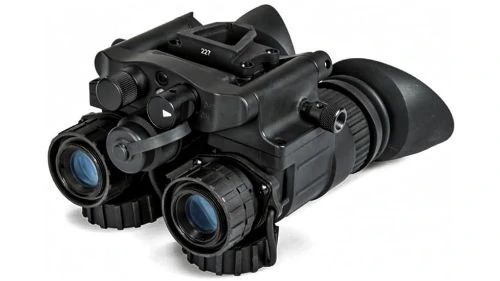 | Armasight BNVD |
| CHECK PRICE |
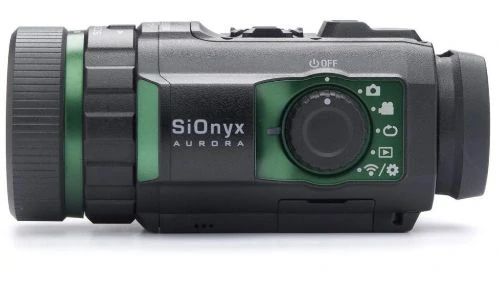 | SiOnyx Aurora |
| CHECK PRICE |
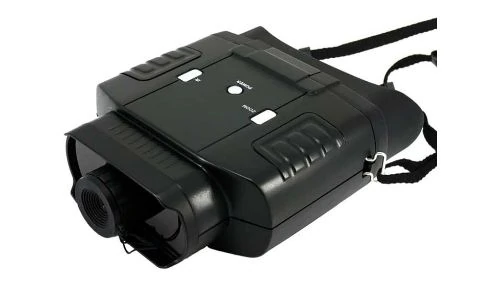 | X-Vision Hands Free Night Vision Pro |
| CHECK PRICE |
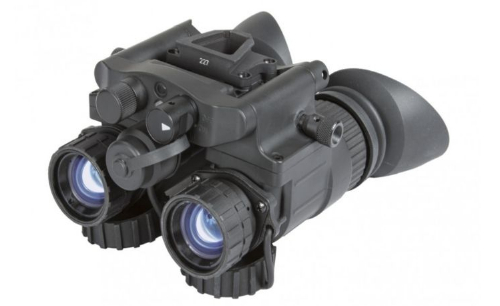 | AGM NVG-40 NL2 |
| CHECK PRICE |
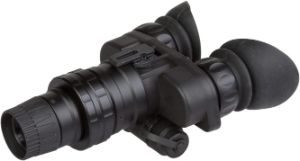 | AGM Wolf-7 NL2 |
| CHECK PRICE |
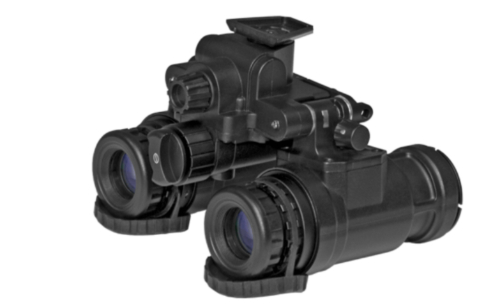 | ATN PS31-3 |
| CHECK PRICE |
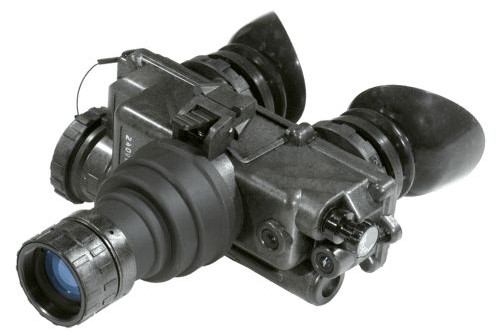 | ATN PVS7-3WHPT |
| CHECK PRICE |
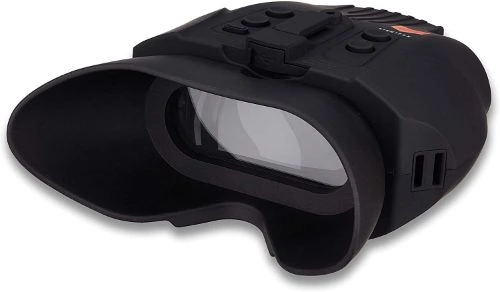 | NightFox Swift |
| CHECK PRICE |
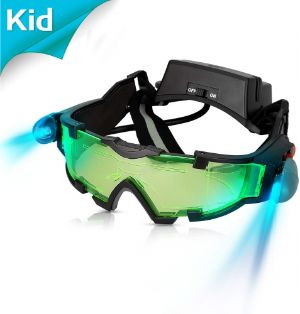 | AGM Kids Night Vision Goggles |
| CHECK PRICE |
Why Trust Us?
After hundreds of hours of hand-testing night vision goggles in the field and at the range, and thousands more hours researching and writing about them, we feel we earn the title of experts when it comes to optics!
We purchase as many of the optics for our tests as possible, and run them through their paces to make sure they will perform at the range and in the field.
Our combined decades of experience from night hunting or wildlife observation, to big game hunting and competitions has been integral in putting together this round-up of the best night vision goggles.
Get the inside scoop on how we test optics here.
What Are Night Vision Goggles (NVG)?
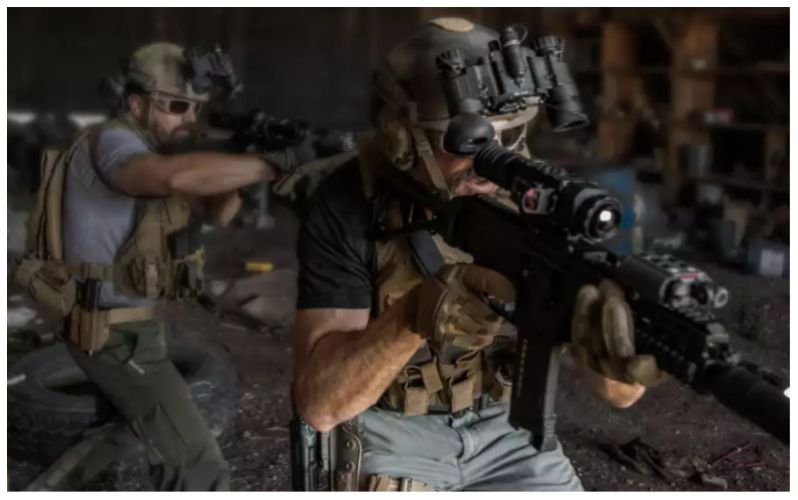
Any NV (Night Vision) optic that can be mounted to head and helmet gear can be defined as a night vision goggle device.
However, since most are exceptionally costly, I set a criteria that includes monoculars, binoculars, and bioculars.
Often times, the included head mount assembly is called a goggle kit. For example, when a monocular is mounted to provide hands-free operation, it's now a complete goggle assembly.
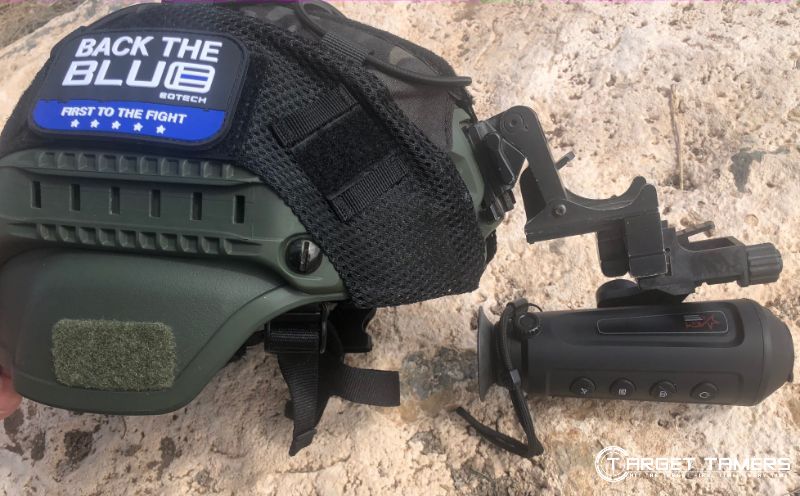
What specific features should you look for in various types of devices to determine if it's goggles or just another night vision binocular or monocular?
- 1x magnification
- 20-29 mm apertures
- Hands-free operation
- Included goggle assembly kit
Who needs Night Vision Googles?
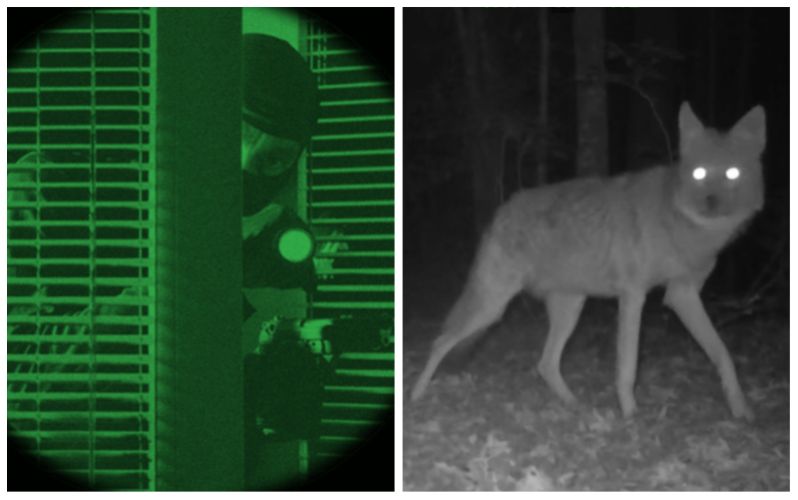
Many professions, civilian sports, and lifestyles incorporate goggles in one way or another.
- Law enforcement
- Military
- Security/Surveillance
- Home defense/SHTF preparation
- UFO watching
- Hunting
- Stargazing
- Camping
. . . And the list goes on.
With so many uses for NVGs, I took the initiative to provide you with the goggles that are ranked and rated to be the best in the commercial market. From under 100 bucks to lip-biting, high-end prices, I have the top-ranking cream of the crop goggles in every price range.
The 9 Best Night Vision Goggles
1. Armasight BNVD – Most Advanced Night Vision Goggles
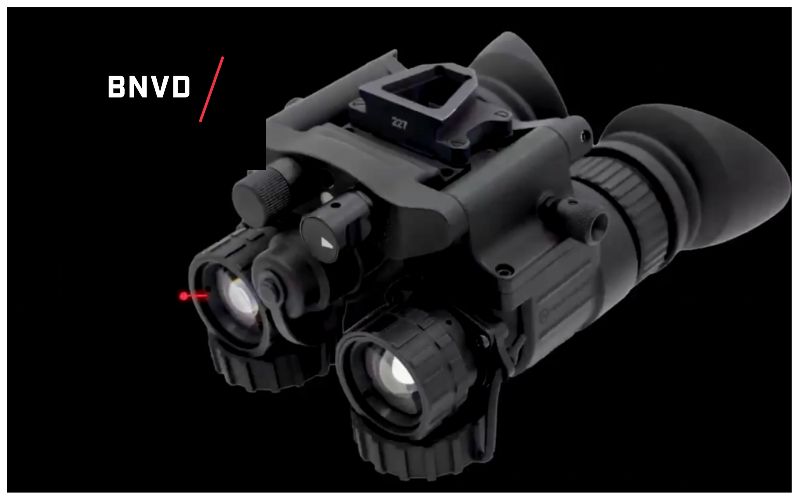
With Armasight’s return and separation from FLIR, their product listings are slim, but they have substance. Armasight now only offers high-quality Gen 3 IIT night vision devices. The BNVD are binoculars that are ideally suited to goggle use, but a legitimate drawback is cost.
Pros:
- Gen 3 Pinnacle
- Single barrel flip-up
- 51-degree FOV option
- Compact/lightweight
- Dual power source option
Cons:
- Price
In my opinion, the BNVD is a logical option for those who want the most advanced night vision goggles on their helmet. As a dual-tube channel device, it's incredibly convenient to flip one barrel up for monocular use when desired.
As a binocular, it’s surprisingly lightweight at 1.4 lbs and compact at 5.4 x 2.8 x 4.6” in size. It's both water and fog-resistant which I think will prove beneficial to hunters and law enforcement.
Speaking for myself, the Armasight BNVD has an exorbitant price tag. But the trade-off is dual Gen 3 Pinnacle thin-filmed tubes with 64-81 lp/mm resolution, automatic and manual gain, a built-in IR illuminator, 1x magnification, and Bright-Light Cut-Off.
It can be powered with either a single AA or CR123 battery. If you need visual correction, both tubes have adjustable diopters.
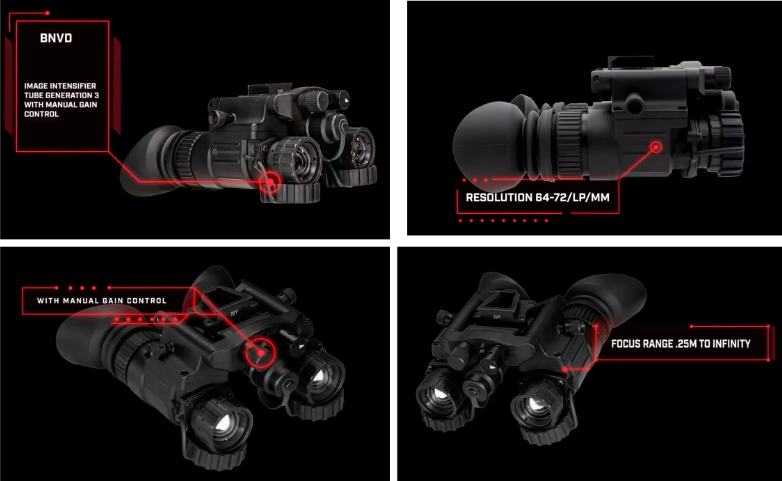
As expensive as it is, the Ghost White Phosphor tube is not much more than the Green Phosphor. Redundantly, it doesn’t cost that much more to opt for the BNVD-51 than it does the standard model. The difference here lies in the 27mm lens, 40-degree FOV, and 25mm eye relief of the standard BNVD versus the 19mm lens, 51-degree FOV, and 17mm eye relief of the BNVD-51.
Though the BNVD-51 has a smaller lens and shorter eye relief, the wider FOV offers maximum situational awareness that those in professional engagements may find invaluable. The BNVD offers the very best of binocular vision for mobile, navigational, professional, and hunting applications.
2. SiOnyx Aurora – Best Under $1000
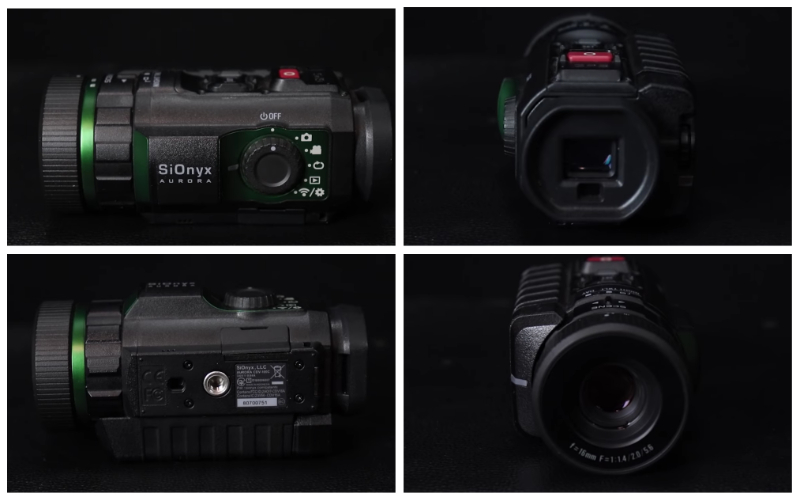
Overall, Gen 1 night vision is becoming difficult to acquire as it seems to be phasing out of the market. In its place, digital night vision has become the sought-after alternative for function and value. Case in point, the SiOnyx Aurora digital monocular that extends its usefulness to goggle use.
Pros:
- Price
- Digital
- Video/image recording
- Focus & diopter
- Mounting options
Cons:
- Battery life
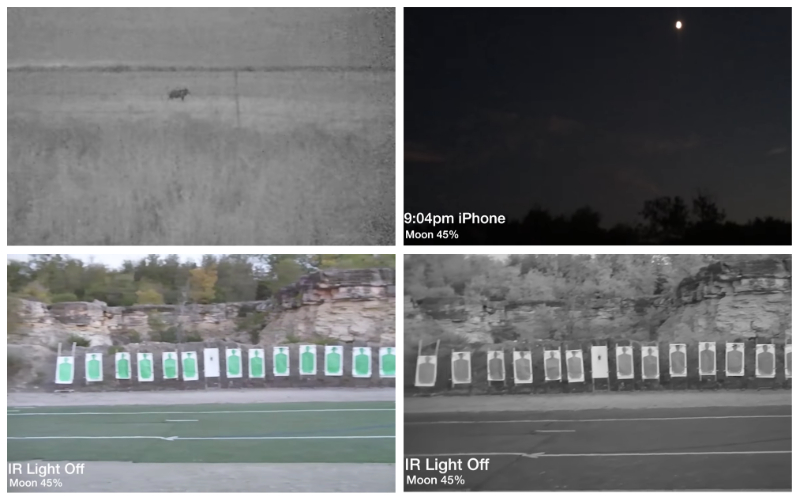
Being digital, the Aurora requires a lot of electronic power for operation from its special camera-type battery. It runs continuously for two hours which is limited and short, however, you can use a USB battery pack to extend battery life.
With a digital CMOS sensor, I know many users will enjoy its many techie perks from use in daylight conditions, still image and video recording, and features such as digital zoom, exposure, focusing, etc.
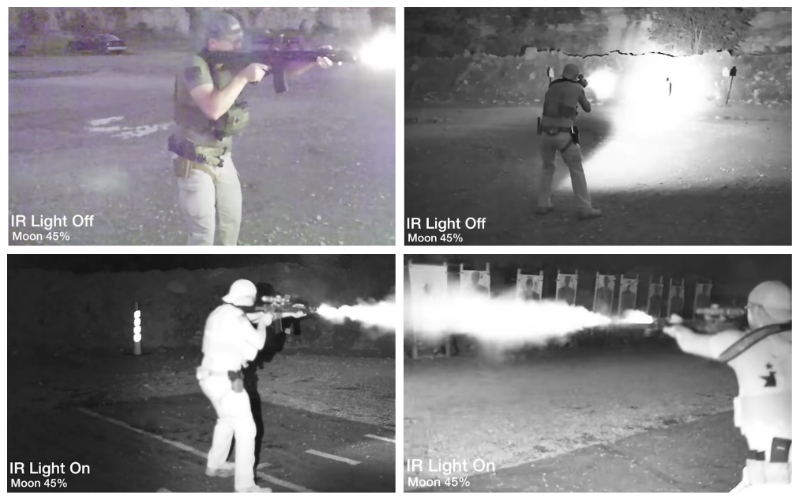
Though the digital features are great, I think its fundamental specs are what lends to its primary performance for use as NV goggles. It has 1x zoom, diopter adjustment, manual and electronic focusing, and the versatile ¼”-20 tripod threading for mounting.
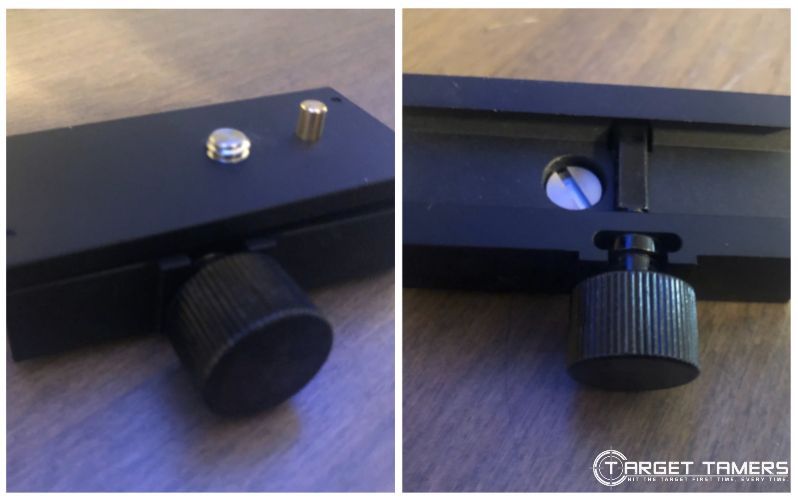
You can weapon mount it though I'd say the eye relief is very snug. Its recoil-resistance is rated for .223 Rem calibers, and I'd recommend heeding that. It’s also compatible for connecting to J-arms to mount to head and helmet gear. Many have done it, and many enjoy the benefits of having hands-free operation from an affordable NVD.
The Aurora is backed with a 1-year manufacturer warranty from the date of purchase, proof of purchase is required, and is only valid to the original owner. For under $1000, I think for the money, it's one of the best digital alternatives to passive night vision.
3. X-Vision Hands Free - Best Digital Night Vision Goggles
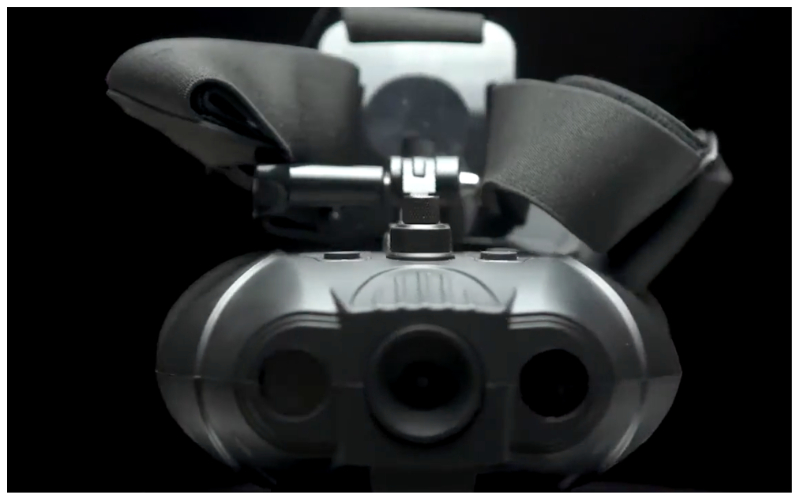
You can't beat this if you're on a tight budget. The X-Vision goggles are one of the cheapest you will find in the market that is not a child's toy. It's digital NV, hands-free, and incredibly affordable.
Pros:
- Price
- Digital
- Day/night use
- Battery life
- Black/white display
Cons:
- No photo/video recording
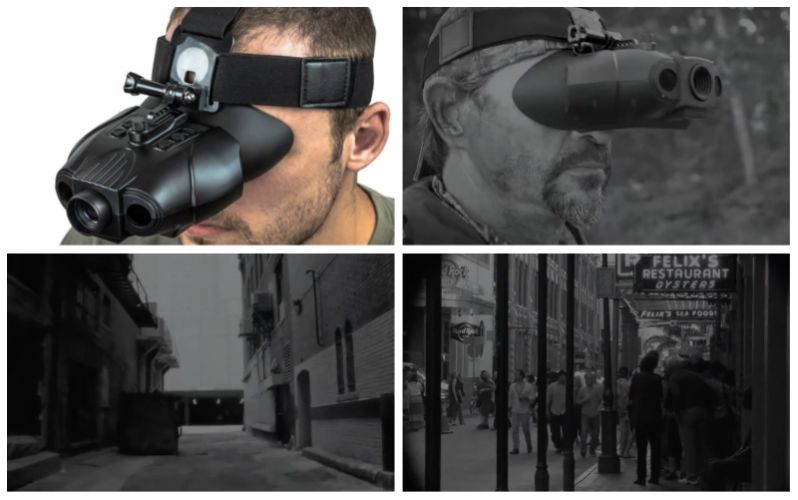
The X Vision NVD does not have image capture or video recording. It's not necessarily a bad thing since it keeps the price very low. But, I am a fan of built-in recording on a digital device, so this is a thumbs down.
I like the rechargeable battery that will last up to 8 hours in daytime and 5 hours at night. I must admit that this is a long-lasting feature for digital NV. Of course, it can be used during both day and night conditions.

The 10-degree FOV will provide a sight picture in black and white. I really like how compact and lightweight it is at 5.5 x 6.3 x 2.6" and a mere 12 ounces. For hands-free operation, it comes with an adjustable head strap.
The digital goggles are advertised to provide up to 300 yards of detection range at night and up to 440 yards during the day. For an entry-level model, low price, and digital resolution of 320 x 240, I think those estimations may be stretching it, but it's certainly possible with the aid of an IR flashlight.
This may isn't a covert pair or a set you'll want to sprint around with, but it is NV in a hands-free design for search and rescue, close-range hunting, and searching the skies - day or night.
4. AGM NVG-40 NL2 – Best for the Money
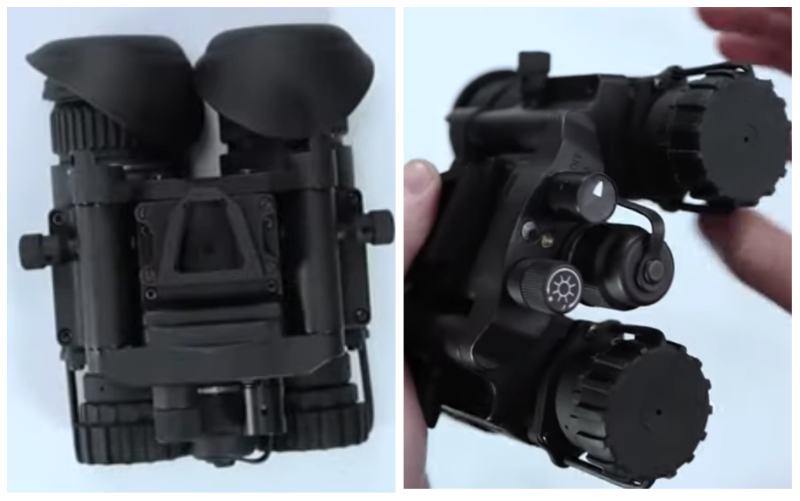
The AGM NVG-40 NL2 is one of the most affordable dual-channel night vision binoculars available. It’s not affordable in the normal sense that it’s budget or entry-level, but it’s far cheaper than similar alternatives from competing manufacturers.
Pros:
- Gen 2+ “level 2”
- Dual-tube design
- 40-degree FOV
- Manual gain
- Compact/lightweight
Cons:
- Still pricey
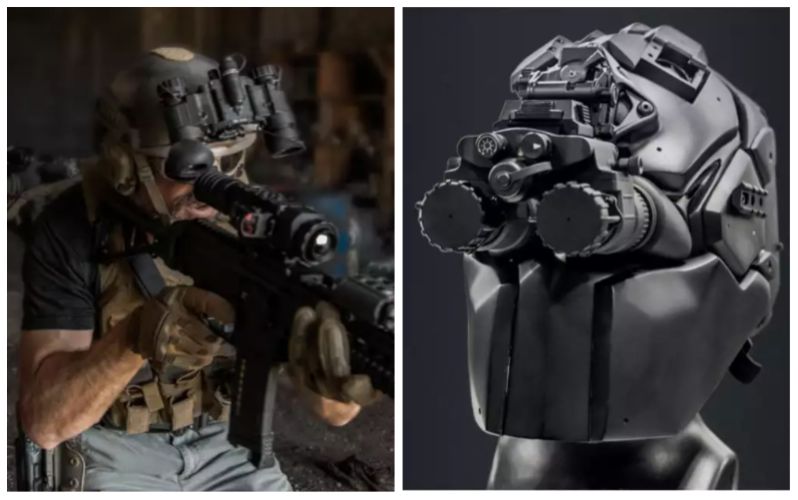
I’m not one to say that $4000 (approx.) is affordable, but when it comes to a BNVD, it sure is. This NVG-40 is Gen 2+ with a level 2 IIT that has minimal spots in zone 1. Unfortunately, AGM doesn’t specify where their tubes are manufactured but they’ve had excellent feedback on their NV and thermal imaging products.
The NVG has 45-57 lp/mm resolution, 27mm objective lenses, and a wide 40-degree FOV. With 1x magnification, I know it has as natural depth of field as possible for mobility with hands-free operation.
It’s not an autogated model, but it does have manual gain, bright-light cut-off, and an auto shut-off system. It takes a single CR123A or AA battery that powers both tubes for about 20 hours of runtime. That’s a little on the weak side in my opinion, but an optional external battery pack will push runtime to approximately 80 hours.
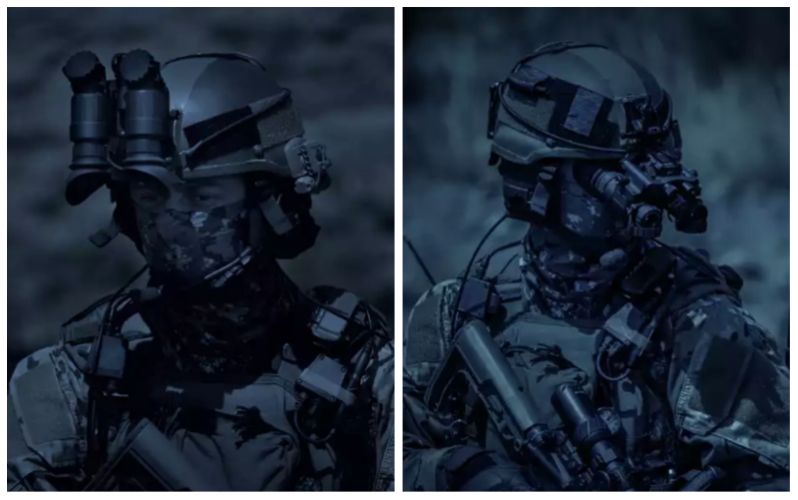
I think its dimensions are pretty good. It weighs 1.4 lbs and is 4.5 x 4.6 x 2.9” in size. I really like that it comes with two mounting brackets. Preinstalled is the dovetail shoe but in the box is a bayonet/horn shoe for fitting to mounts like the Norotos “Rhino” mounting arm.
For a BNVD, it can be used in the monocular hands-free position (individual hinges) and both tubes can be stowed up and out of the way. The AGM NVG-40 has all the benefits of a professional-grade BNVD without the additional $2000-4000 that it would cost from someone else.
5. AGM Wolf-7 NW2 - Best White Phosphor Goggles
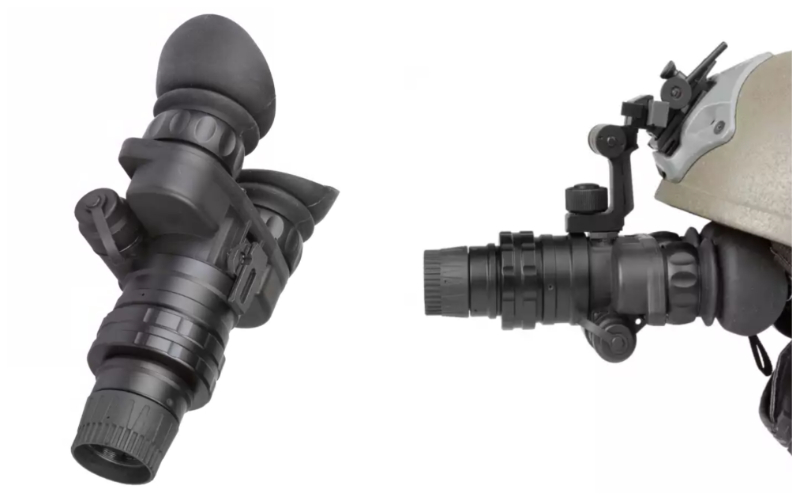
White phosphor is a hit as it can be seen in any generation of night vision, and many find its black/white display easier on the eyes. The Wolf-7 NW2 has a single white phosphor tube in the bi-ocular design. The single tube biocular is also where you’ll save some cash on night vision.
Pros:
- Price
- Gen 2+
- Biocular design
- 40-degree FOV
- Ultra-lightweight
Cons:
- Only mounts to AGM Goggle Kit
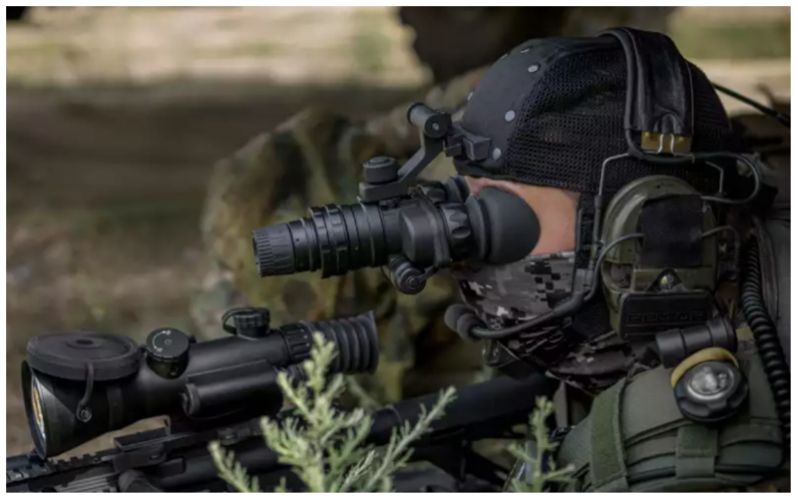
I reckon the good news is that it comes with a cap goggle kit in the box. It’s basically ready for use out of the box. However, if you’re looking to use it with your own dovetail or bayonet mount, you’ll need adapters and those aren’t cheap.
But I did mention saving cash. Instant night vision cost savings come from its lack of manual gain in favor for automatic brightness and from the design. Though there are two ocular bells and eyepieces, there is only one 24mm objective lens that in an objective bell that is attached to a single Gen 2+ image intensifier tube. This equates to a biocular design.
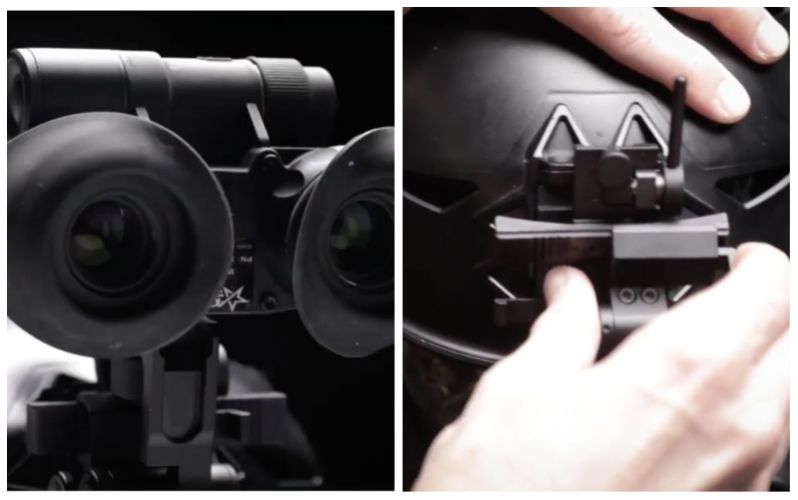
Though many bioculars like the AGM Foxbat 5 are bulky and heavy, the Wolf-7 is fantastically lightweight. I highly recommend the Wolf-7 for helmet mounting and hands-free operation because it’s a mere 0.9 lbs. Due to the length for the single tube, it’s slightly long at 7.4”.
It takes a single CR123A or AA battery that powers it for up to 60 hours. Though it’s not compatible with external battery packs, I think the long runtime more than makes up for it.
With 45-57 lp/mm resolution and a 40-degree FOV, you can expect approximately 150-yard performance. The AGM Wolf-7 is worth it for the money, the white phosphor display, and for nighttime hunters on a budget.
6. ATN PS31-3 - Best Compact Night Vision Goggles
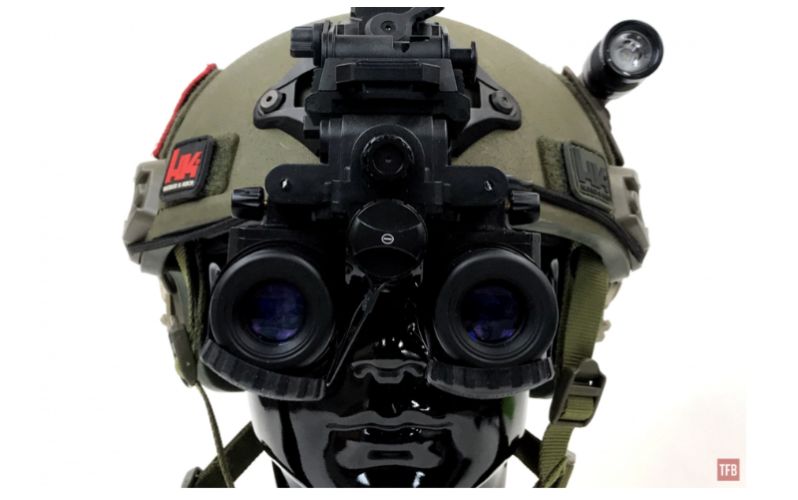
The ATN PS31 BNVD goggles replaced the PS15 series. This PS31-3 has Gen 3 dual tubes, is the most affordable in the line, and is ultra-compact. Though not the lightest goggles around, it’s reasonable at 20 oz. For the quality, these are A-class goggles made for hardcore hunters and law enforcement.
Pros:
- Dual-tube goggles
- Gen 3 IITs
- Auto-gated/thin-filmed
- 50-degree FOV
- Compact
Cons:
- Price
The PS31 line is about twice the price of the discontinued PS15 line. However, you’re getting top-notch grade and there’s no room for Gen 2. The dual tubes are A-grade Gen 3 with resolution of 64-72 lp/mm, SNR of 22, and FOM of 1600. They’re auto-gated and thin-filmed.
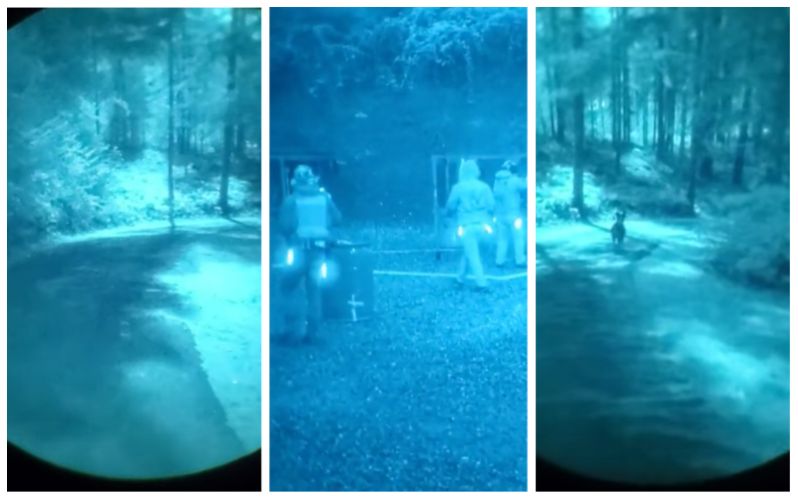
As a BNVD design, both tubes have independent hinges and can be used in the monocular position. They have the flip-up on/off and side flip-up on/off capability for battery preservation and instant “on” activation.
I like the 4.5 x 7 x 3.5” size. Though kind of long, the high-quality performance of the tubes makes up for it. Part of the conception of the PS31 was to make it more ergonomically suited for head mounting by reducing head borne weight and improving center of gravity.
I would strongly encourage getting the optional battery pack. Though 60 hours with 1x CR123 battery is plenty, the additional pack will extend that runtime to 300 hours. Now that’s what I think is a personal best for ATN.
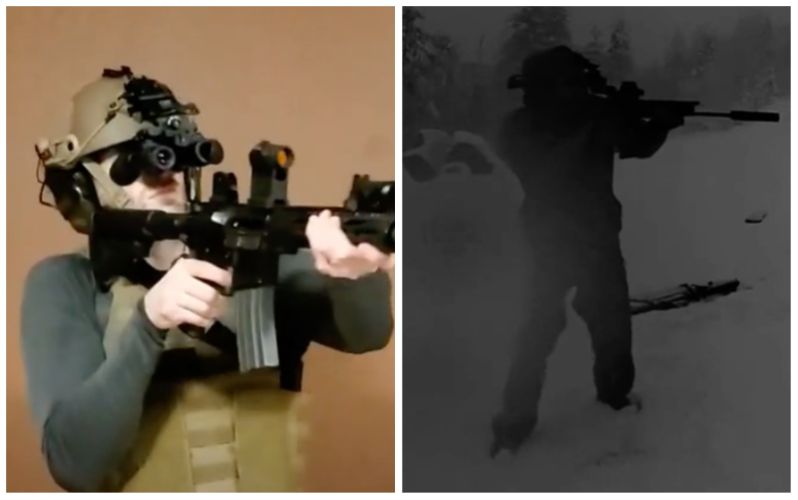
Though not waterproof with a IP67 rating, it’ll hold up to some exposure but not submersion. But the PS31 is certainly made to be used. I recommend it for the best-of-the-best hog and coyote hunters and professional applications like patrol/duty use and security.
7. ATN PVS7-3WHPT - Best Military-Grade Goggles
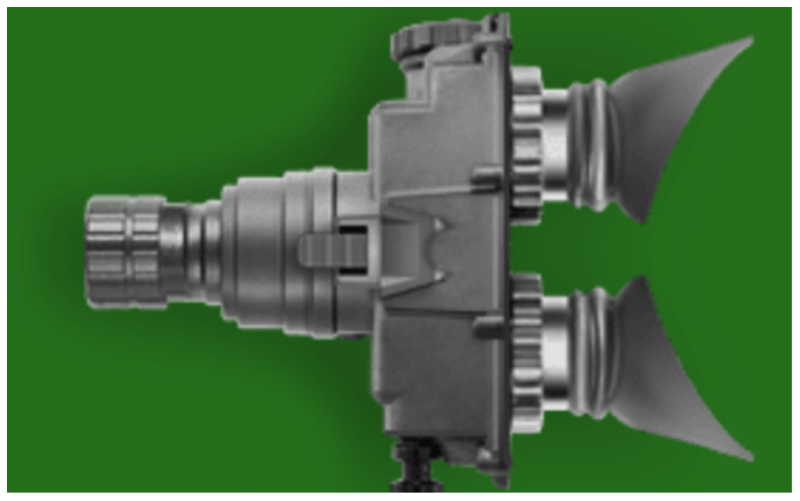
Built as an exact replica to the standard military commissioned AN/PVS7, these goggles have been combat-proven to be effective in the field. As the most expensive mode to ATN’s PVS7 series, it puts professional-grade, military-issued tech in the hands of civilians.
Pros:
- Gen 3
- White phosphor
- Auto-gated/thin-filmed
- Mil-spec
- Head assembly mount included
Cons:
- Battery hog
The PVS7 model is more affordable than the PS31 line and that’s because you’re getting a biocular design – so a single image intensifier tube. Less tubes, better cost. However, even though there’s only one A-grade tube shared between two eyepieces, it has resolution of 64-72 lp/mm and an incredible SNR of 30.
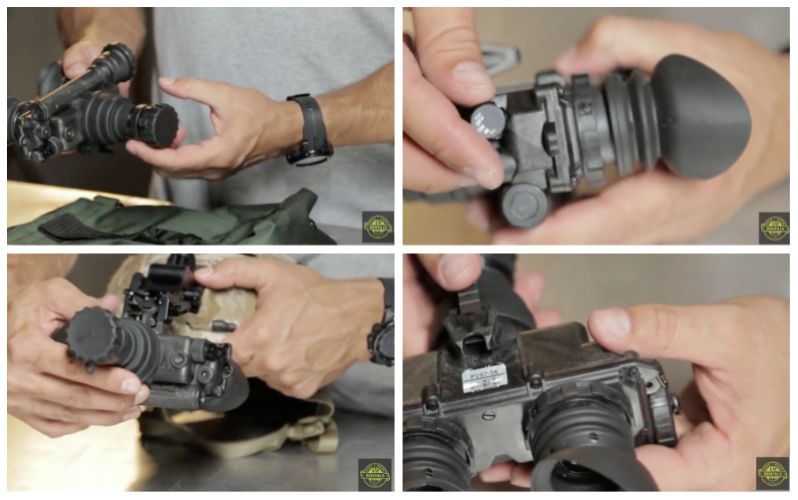
The photocathode is auto-gated and thin-filmed and has a white phosphor screen. So, the image won’t be in that typical green of night vision but the trending black/white tones that provides better contrast to make out fine details, in my opinion.
It takes 2x AA batteries and they are included in box along with a head assembly mount so that you can get mounted up right away. For requiring two batteries for a single tube, it provides only 50 hours of runtime.
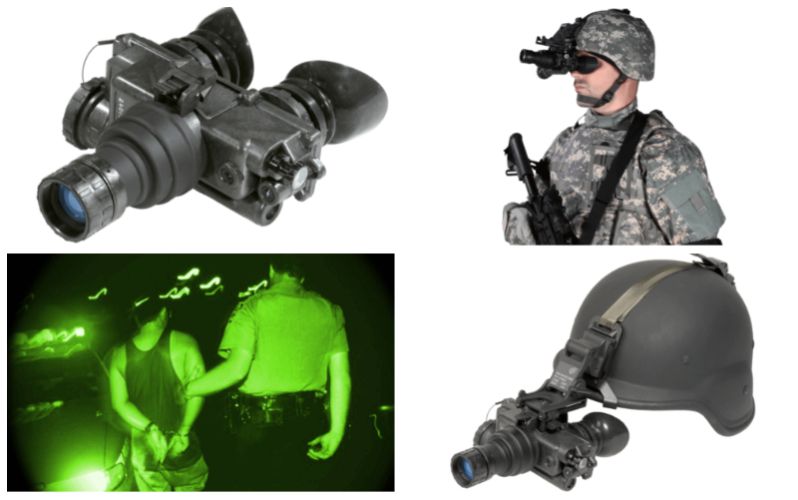
I think it’s reasonable for its size and weight. At 1.5 lbs, it’s not the lightest but it’s also not the heaviest. With a bulk of 6.4 x 3 x 6”, it’s wider than a BNVD but it's not priced like a BNVD, is it?
In my opinion, the PVS7-3WHPT is built like tank, has the best IIT in the series, and inevitably comes with mil-spec bragging rights. For the money, it’s one of the best night vision goggles around.
8. NightFox Swift – Best Under $200
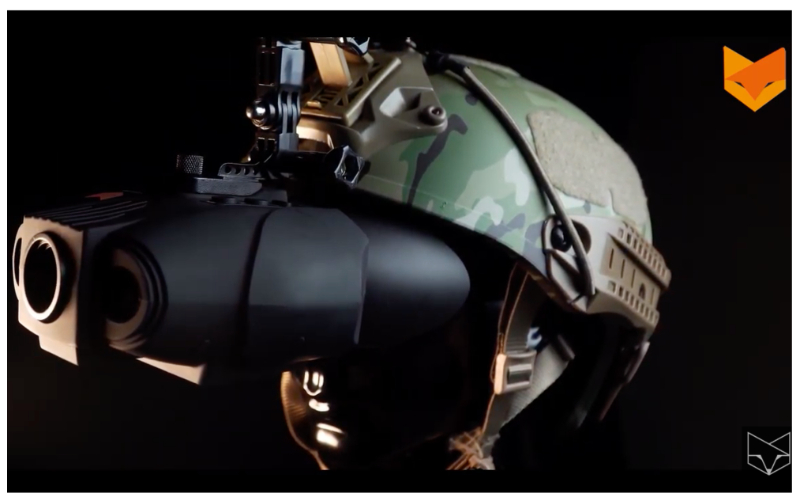
In general, night vision goggles under $200 will be very similar. With digital technology and limited range, the distinctive differences between the two price ranges will be its helmet-mounting compatibility. The NightFox Swift includes a head mount and 1x magnification suited to goggle use.
Pros:
- Price
- Digital
- 1x magnification
- Custom settings
- Head mount included
Cons:
- Battery life
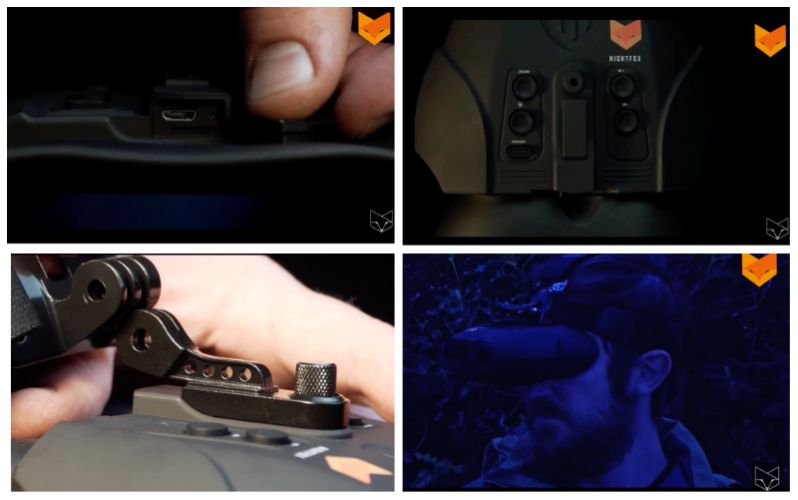
I like that the NightFox has 1x magnification but also digital zoom. It’s designed with a single display and an eyecup that surrounds both eyes. Even though it's entry-level quality, a simple head mounting strap is included for hands-free use.
As I expected, it can be used safely in color mode during the day and then it switches to black/white mode for night vision. It's a small display with low resolution, but it suffices for recreational CQB use and varmint hunting.
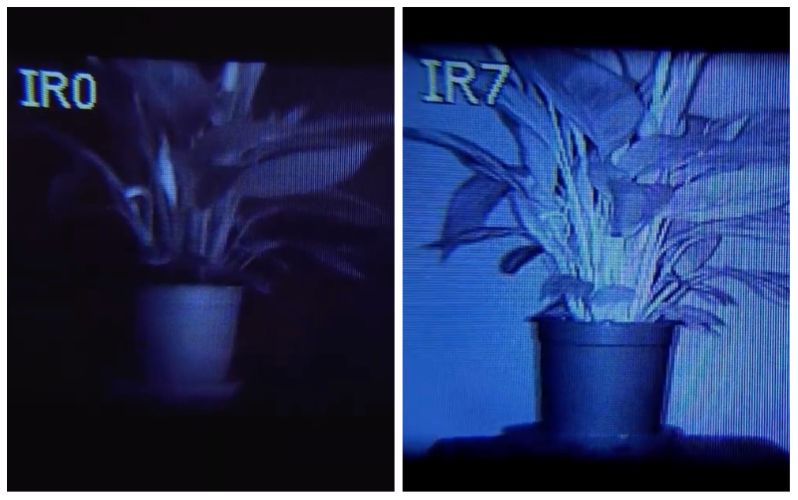
I must applaud NightFox for their transparency for disclosing that the max detection range is 70-75 yards. The NightFox Swift has up to 7 IR illuminator settings. Both the manufacturer and buyers report the best options for improving stealth and increasing range to 100 yards (approx.) is to turn off the IR illuminators on the Swift and use an external IR flashlight. That will be a separate purchase but perhaps fitting for nerf, airsoft, or hunting applications.
The Swift is limited in runtime time and does not take external batteries. The rechargeable internal battery runs for 3 hours. Eek, that's weak, but it is under 200 bucks. It’s 12.7 oz and 6.7” in length, so it’s very reasonable in size and weight.
For the budget price and 18-month warranty, I certainly recommend the NightFox Swift as a preferable NVD to cheaper digital alternatives.
9. AGM Kids Night Vision Goggles - Best for Kids
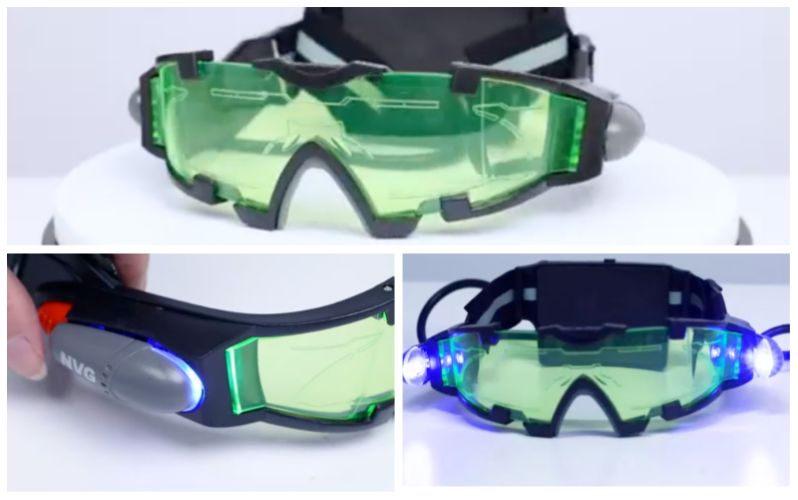
Going camping and leaving the electronics behind? Keep the kids interested in the woods for less than 20 bucks. With a pair of NVGs, they'll see camping as a new, fun experience.
Pros:
- Price
- LED lights
- 25 ft
- Durable
- Wide vision
Cons:
- Heavy
Okay, so these aren't true NVGs as they have LED lights that illuminate the path ahead. Flip-out lights, on both sides of the ears, stream blue light that provides up to 25 feet of sight in the dark. I think 8 yards is an exaggeration, so it will be more like half that distance.
I shouldn't have to say it, but I will. It should be noted that these goggles are not suitable for hunting, stealth covert missions, or any activity where an adult may need night-vision. With visible LED emissions of light, you will be seen. This is a child's toy that enhances visibility in the dark for nighttime games.
The glasses have green-tinted, etched graphics that glow in the dark when the lights have been activated. A one-piece lens allows for wide vision, and it also provides durability and eye protection. They're windproof, dustproof, and will hold up to reasonable abuse of mishandling by children.
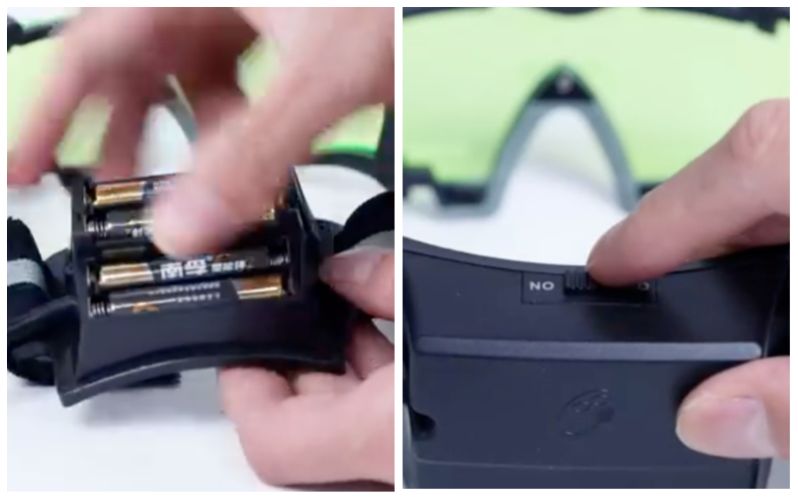
While they're designed with an ergonomic fit with a nose pad and adjustable elastic band, they can be heavy after installing 4x AAA batteries. I wouldn't recommend them for long-term use on a small child due to the overall weight. But, for 20 minutes of fun exploring the dark woods (supervision recommended), the AGM goggles will provide a special kind of camping experience they'll never forget.
From personal experience , it's hard to limit screen time and pull the kids away from electronics. With the AGM goggles, you don't have to leave all the electronics at home.
What to Look for in Night Vision Goggles
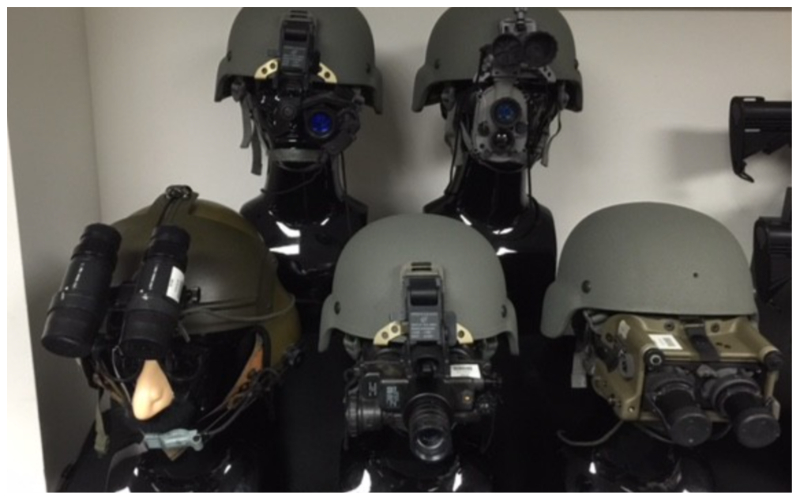
The primary features to look for would be the type of night vision: passive or digital. The higher quality tubes in a passive device, the more expensive. The better quality sensor and resolution in a digital device, the more expensive.
Overall size and weight must be considered since it's intended to be mounted as a hands-free device. Finally, verify included accessories because not all goggles come with an included mounting kit.
If you have more questions about night vision in general, see our FAQs on it here.
Budget/Price
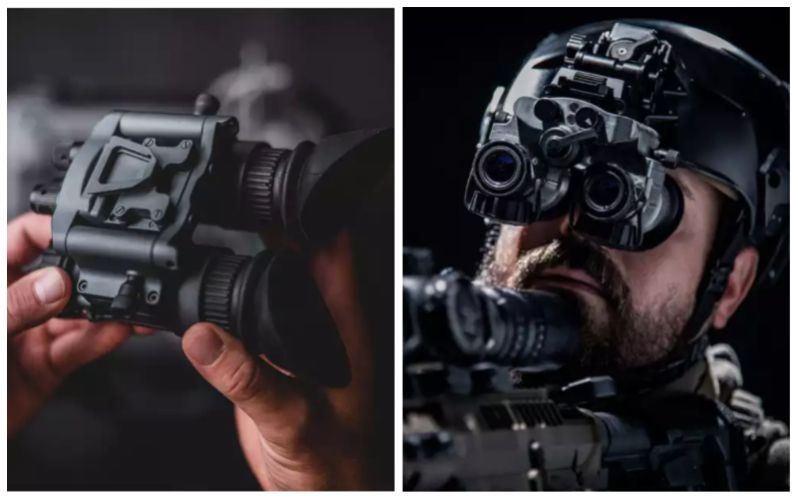
I would recommend saving now if you want passive NVGs for professional use. You might not be willing to pull the trigger on $10,000 goggles, but a budget of around $2500-$4500 will land you Gen 2 and some Gen 3 gear if you're brand-specific.
AGM and ATN tend to have the better prices while Armasight reigns with the highest price points.
Digital NV is cheaper than passive NV. Though there are many that are not worth considering, some of the good ones are great for hunting and all recreational applications.
| Product | Price Range |
|---|---|
| Armasight BNVD | Under $10,000 |
| SiOnyx Aurora | Under $1000 |
| X-Vision PRO | Under $400 |
| AGM NVG-40 NL2 | Under $4500 |
| AGM Wolf-7 NW2 | Under $3000 |
| ATN PS31-3 | Under $8000 |
| ATN PVS7-3WHPT | Under $5000 |
| NightFox Swift | Under $200 |
| AGM Kids Goggles | Under $20 |
Magnification
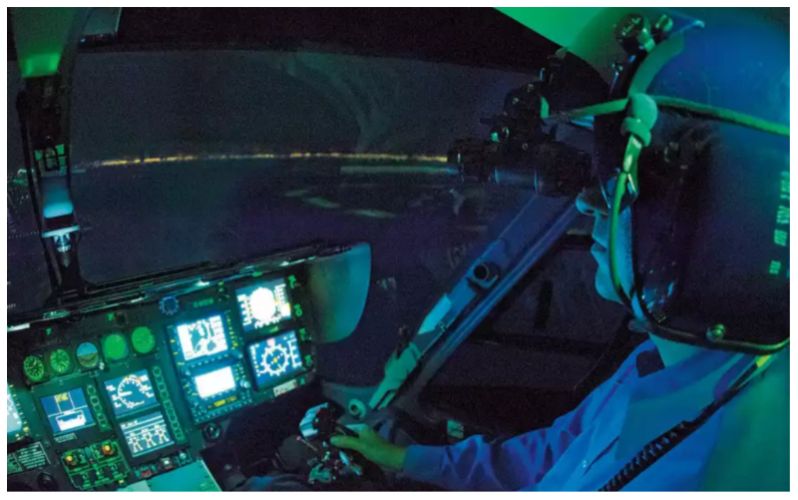
1x magnification is the standard for NVGs and is no magnification at all. This has many benefits from natural vision, optimal mobility, machinery and vehicle operation, and reading text, graphics, etc.
However, the drawback is not being able to see at extended ranges. But with NV gear, long-range is a subjectable term anyway. Other factors like the objective lens aperture, eye relief, and FOV specs may help to determine how much use and comfort you may get out of your NVG.
| Product | Magnification | Objective Lenses | Eye Relief | FOV |
|---|---|---|---|---|
| Armasight BNVD | 1x | 27 mm | 17 mm | 40° |
| SiOnyx Aurora | 1-3x | 16 mm | 7.5 mm | 40° |
| X-Vision PRO | 1-3x | 50 mm | 1.5 inches | 10° |
| AGM NVG-40 NL2 | 1x | 27 mm | 25 mm | 40° |
| AGM Wolf-7 NW2 | 1x | 24 mm | 21.5 mm | 40° |
| ATN PS31-3 | 1x | 27 mm | Adjustable | 50° |
| ATN PVS7-3WHPT | 1x | 27 mm | Adjustable | 40° |
| NightFox Swift | 1-2x | 20 mm | Unknown | 34° |
| AGM Kids Goggles | 1x | 58 mm | Unknown | Unlimited |
Night Vision Generations
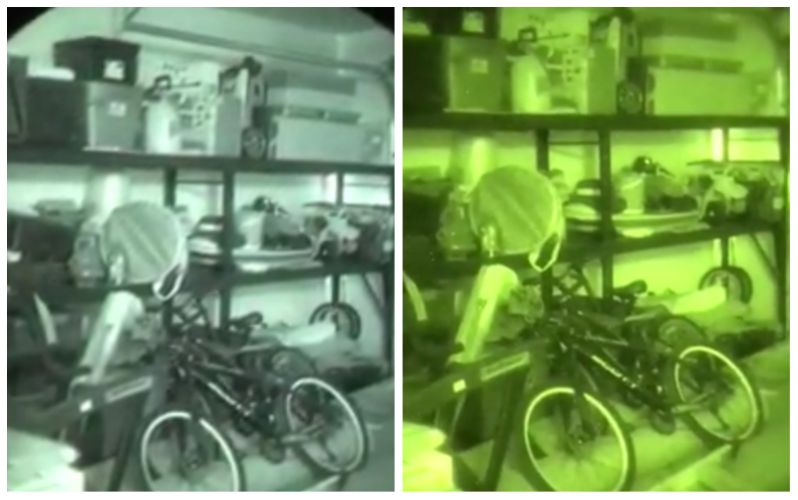
The military equips their soldiers with Generation 3 and higher-end tubes. The detail, resolution, and quality needed for operations demand the absolute best when they often face life-or-death encounters. However, Gen 3 tubes and higher easily start at $4000.
Many NVD users know the difference in quality between Gen 1 and higher quality tubes. However, it's not always the practical option for the civilian to buy Gen 3 tech. Gen 1 and 2 with detection ranges of 50-300 yards is suitable for the hunter, avid outdoorsman, and home defense or SHTF civilian.
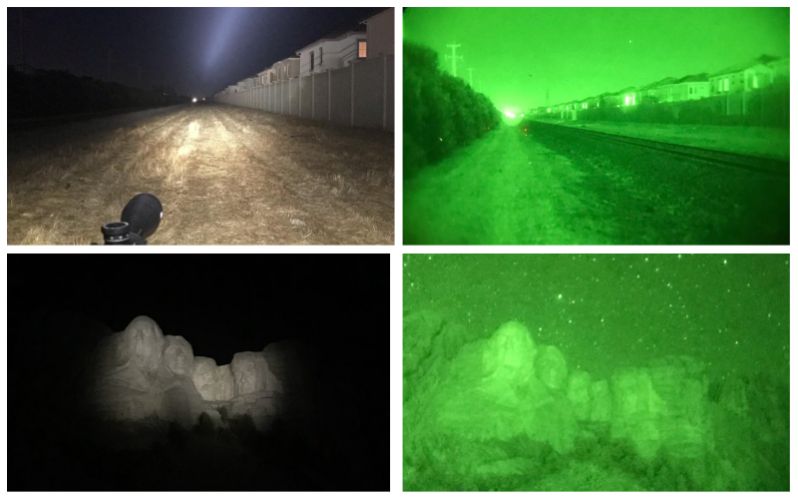
Detection ranges are not always disclosed by the manufacturer, and for good reason. There are a lot of factors, distinct from IIT quality and specs, that can determine how effective detection will be on any given night. Furthermore, I should point out that detection is different to recognition and different again to identification.
- Detection: can detect a target but has no distinguishing features
- Recognition: can recognize that the target is a person from an animal, or a cow from a horse etc.
- Identification: can identify what the target is and possibly with facial recognition
For conservative estimates for passive night vision and realistic estimates for digital, I've listed the detection ranges for human-sized targets below.
If you need more info about NV Generation technology, we have a detailed explanation on all its types.
| Product | Night Vision Type | Phosphor Color | Detection Range (Approx.) |
|---|---|---|---|
| Armasight BNVD | Generation 3 | White Phosphor | 300 yards |
| SiOnyx Aurora | Digital | Color & Monochrome | 300-500 yards |
| X-Vision PRO | Digital | Monochrome | 200 yards |
| AGM NVG-40 NL2 | Generation 2+ | Green Phosphor | 300 yards |
| AGM Wolf-7 NW2 | Generation 2+ | White Phosphor | 150 yards |
| ATN PS31-3 | Generation 3 | Green Phosphor | 300 yards |
| ATN PVS7-3WHPT | Generation 3 | White Phosphor | 325 meters |
| NightFox Swift | Digital | Color & Monochrome | 75 yards |
| AGM Kids Goggles | N/A | N/A | 25 feet |
Accessories
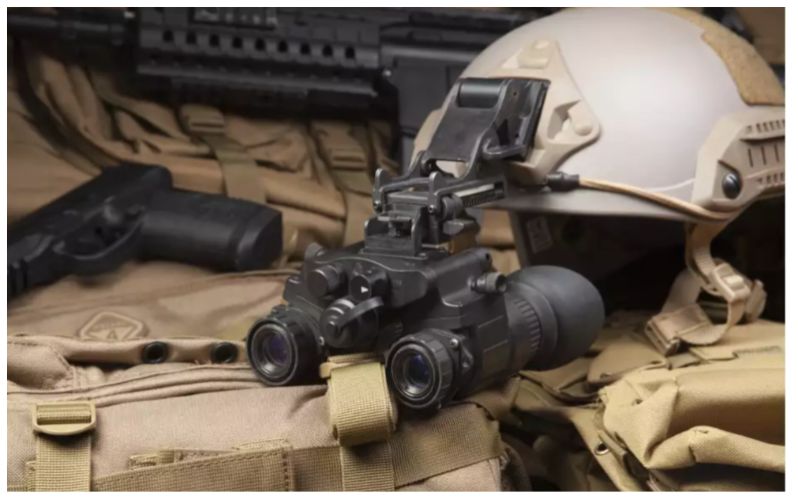
A must-have when buying NVGs are head mount kits. Without it, you won't have hands-free operation and essentially you've just bought a regular NVD. Most goggles will come with a standard head mount that includes for adjustable straps and a chin rest.
It's important to look at the information about the head mount for horizontal and vertical adjustments. These adjustments help to achieve the proper fit for your head and mounting adjustments for eye relief and eye to eye-piece alignment. The type of mount connection will also tell you if the NVG will be easily attachable, adjustable for various stowing positions, or compatible with other gear.
You may want NVGs that allow for extra mounting of accessories for things like an additional IR illuminator or IR flashlight. Some NVGs will have an integrated rail on the body just for this purpose.
| Product | Included Accessories |
|---|---|
| Armasight BNVD | Lens caps, dovetail & bayonet interface shoes, soft carry case, demist shields, sacrificial window, lens cloth, manual |
| SiOnyx Aurora | Hardshell waterproof case, 2x batteries, USB charging cable, 32GB microSD card |
| X-Vision PRO | Carry case, charging cable, head strap |
| AGM NVG-40 NL2 | Dovetail & bayonet interface shoes, soft carry case, battery adapter, demist shields, sacrificial window, lens cloth, manual |
| AGM Wolf-7 NW2 | Soft carry case, AGM cap goggle kit, battery adapter, 1x CR123A battery, lens cloth, manual |
| ATN PS31-3 | Soft carry case, helmet mount, 1x CR123 battery, lens cloth, manual |
| ATN PVS7-3WHPT | Head mount assembly, neck cord, soft carry case, 2x AA batteries, demist shields, sacrificial window, lens cloth, manual |
| NightFox Swift | Head strap, neck strap, GoPro-style connector rail mount, micro-USB charging cable, 18 month warranty, manual |
| AGM Kids Goggles | No accessories or batteries included |
FAQ's
Best White Phosphor Goggles: AGM Wolf-7 NW2
Best Digital: X-Vision Hands Free Night Vision Pro
Best for the Money: AGM NVG-40 NL2
Best Quality: Armasight BNVD
Best Under $1000: SiOnyx Aurora
Best Compact: ATN PS31-3
Best Military Goggles: ATN PVS7-3WHPT
Best Under $200: NightFox Swift
Best for Kids: AGM Kids Night Vision Goggles
There are no legal issues preventing ownership of night vision goggles for citizens in the United States. Without an exclusive license, it is illegal to export and import night vision gear (NVG) and to travel outside the U.S. with them. There are state-specific laws regarding use of NVG for hunting.
Night vision goggles cannot see in pitch black. They amplify ambient light from the moon, stars, streetlights, etc. Although image quality is affected in almost pitch-black conditions, you would need to be in true darkness like a blacked-out building for NVG to be rendered useless.
A good pair of night vision goggles can cost $2000-$4000. The best Gen 1 night vision goggles will start at $1000 and a great Gen 2 pair like the AGM Wolf-7 costs approximately $2500. Quality night vision goggles can run as expensive as $10,000 and more.
As a general rule, you should look for specific features in night vision goggles before you buy. These include 1x, hands-free operation, and compatible mounting assemblies. You should look for image intensifier specs, goggle design, and price to determine what is best for you.
Night Vision Goggles VS Night Vision Binoculars
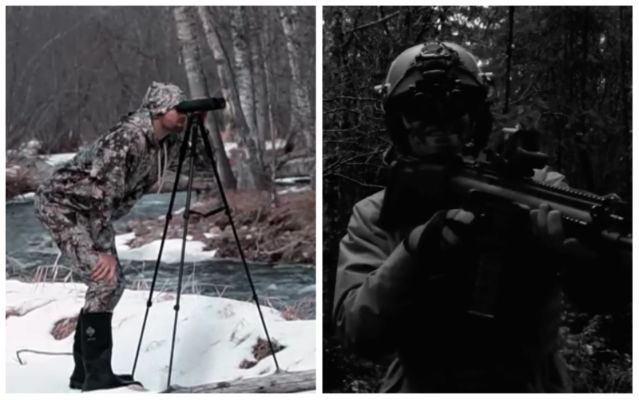
The term "goggles" in night-vision, is somewhat of a catch-all term that includes bioculars, binoculars, and monoculars. When mounted to head or helmet gear for hands-free use, they are now goggles. This is why you'll see binoculars and goggles used interchangeably in the industry.
As mentioned earlier, 1x power, smaller apertures, and included head gear are the iconic features of what separates goggles from ordinary monoculars and binoculars.
Bioculars
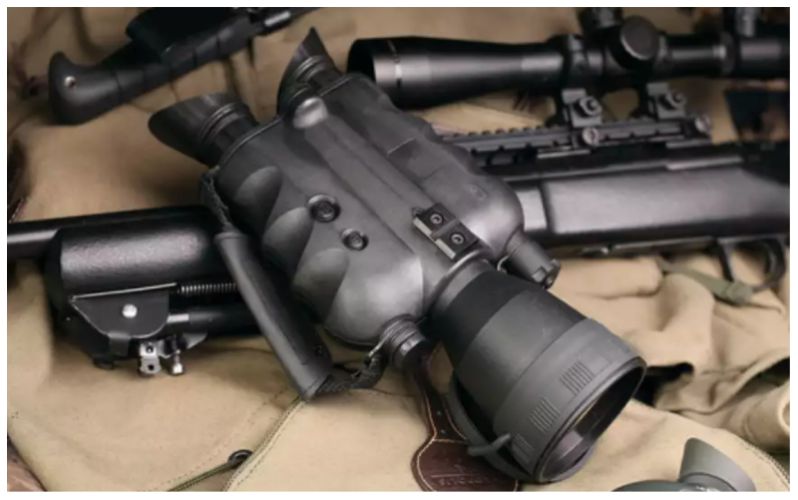
Bioculars have a single tube design easily distinguished from binoculars with their two eyepieces and single objective lens body.
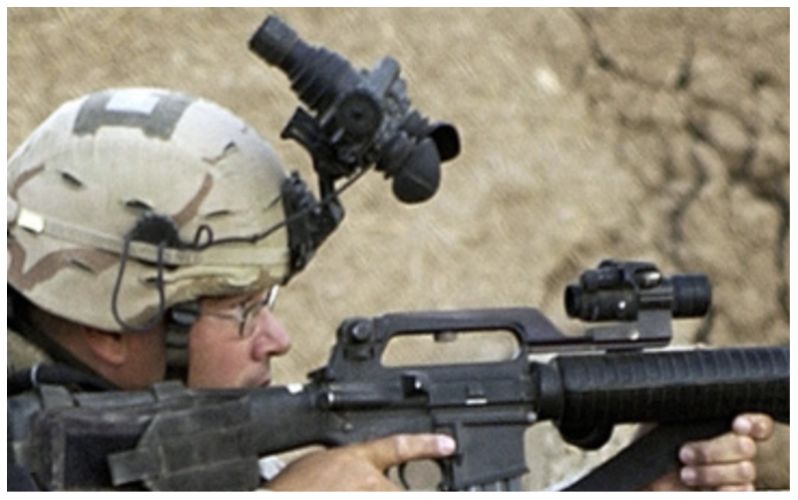
The AN/PVS-7 is a night vision biocular, and all PVS-7 models from various manufacturers design their NV goggles after this military issued night vision single tube device. It is by far the most popular NV type of goggles available, and consequently, it's one of the cheaper models.
Binoculars
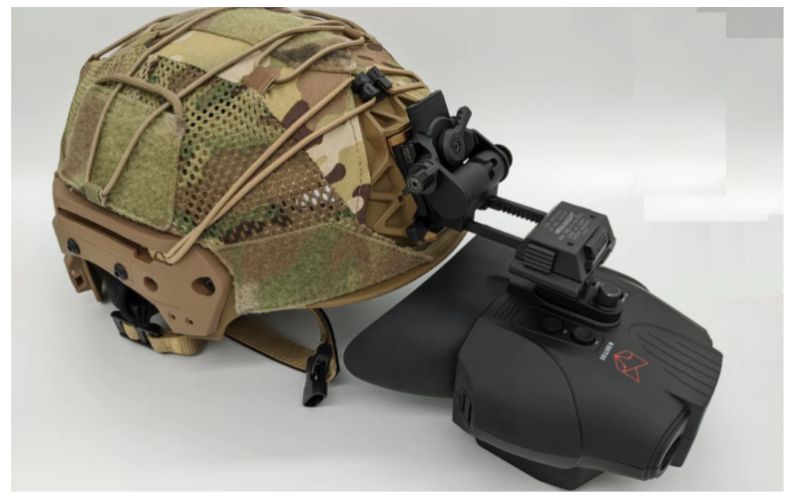
Binoculars, with or without night-vision, come with much higher magnification. They're just regular binoculars if they have more than 1x magnification and cannot be head/helmet mounted for hands-free operation.
With that said, very few actual binoculars qualify as goggles. Those that do are digital with a display and CMOS sensor and they can be mounted to head gear.
One distinguishing feature of passive binocular goggles is that they have dual tubes - a tube for each eyepiece and objective lens pair, but at this point, they're just goggles.
Night Vision Goggles VS Night Vision Monoculars
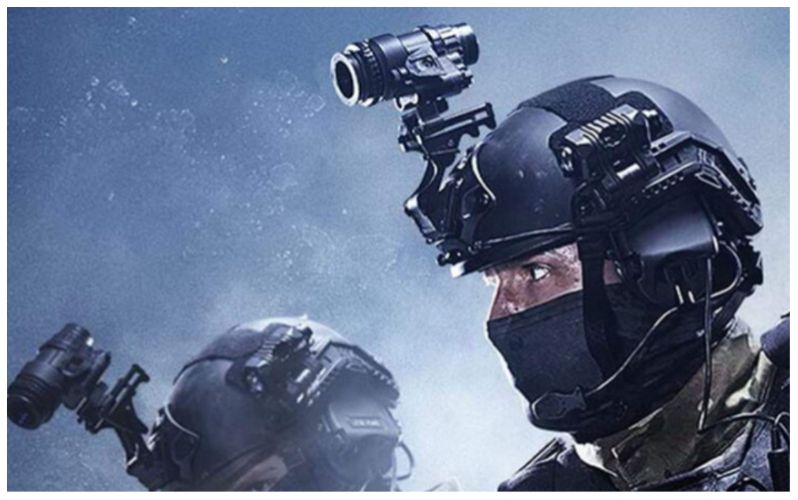
The AN/PVS-14 is a night vision monocular, and all PVS-14 models from various manufacturers design their night vision monoculars after this military issued night vision device (MNVD). The PVS-14 is another popular NV device often used as goggles for hands-free operation.
Monoculars may have magnification and may not. Their iconic design is the single tube with a single eyepiece and objective lens. They can be used as a handheld but may often have mounting points for head/helmet and weapon mounting.
They're obviously more compact and lighter in weight than binoculars and bioculars, and they allow for one eye use of NV and one eye use in natural light without NV.
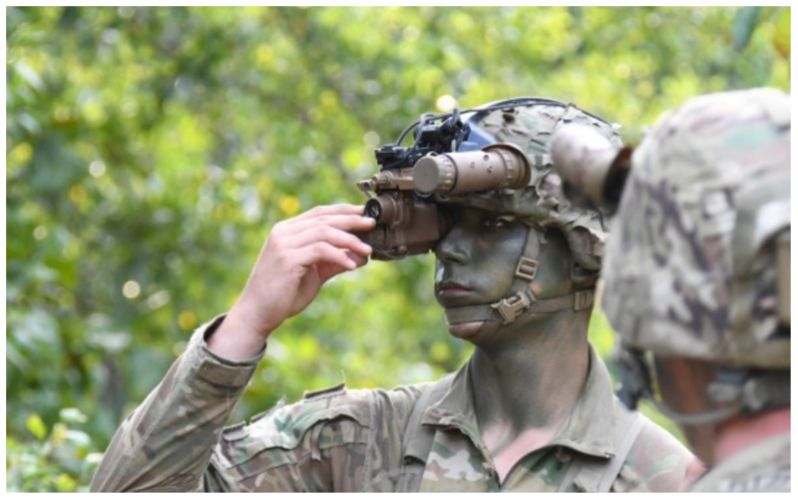
Often, dual-tube goggles can also be used in the "monocular position." This is when one tube of the goggles is flipped up and out of the way and only one tube is in use.
Again, for monoculars to be effectively used as goggles, it must have goggle features that includes head mount assemblies, small apertures, and low magnification.
Goggle for Goggles!
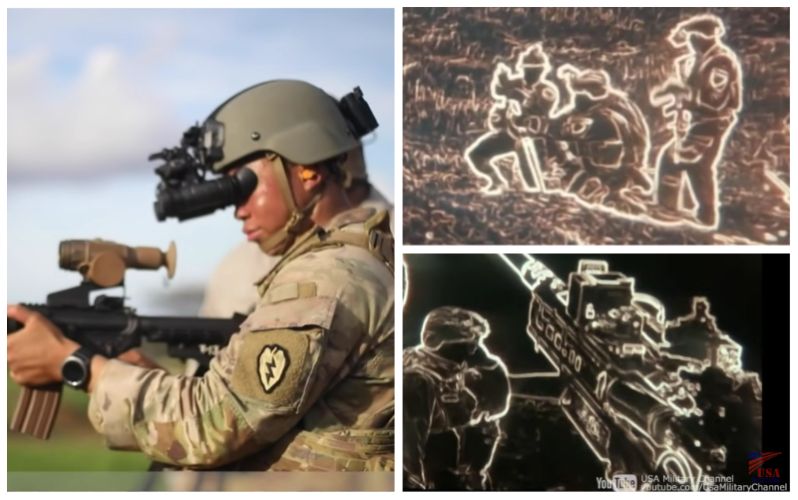
To goggle means to stare or to be wide-eyed in amazement, and with these great NVGs, you can now put a name to your facial expression.
All night vision will help you see better in the dark. So, whether you're seeking out digital or passive night vision, your hunt or secret ops mission will be better off for it.
Further Reading



